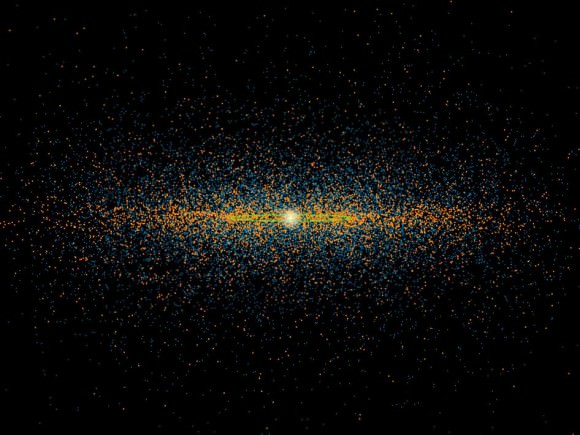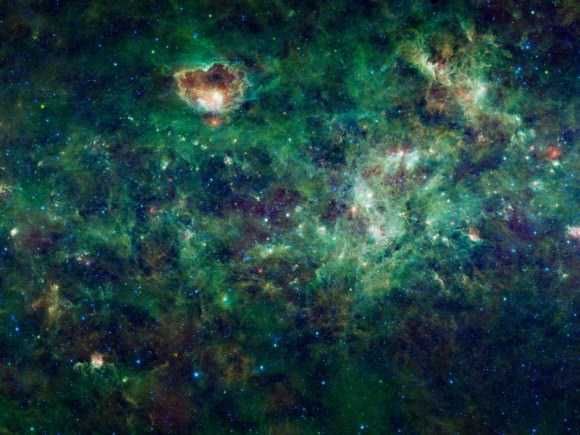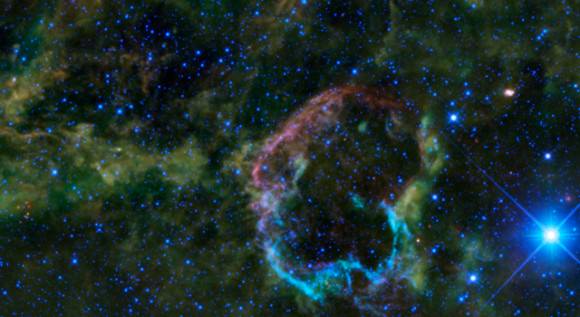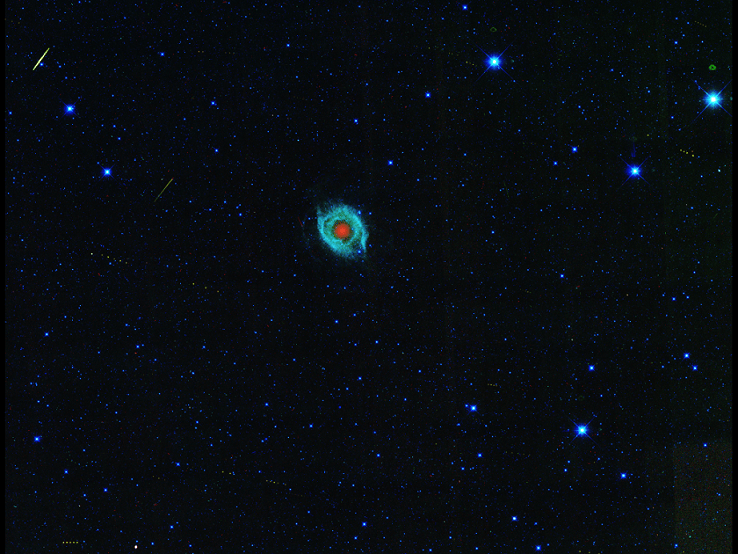Besides being a darn pretty picture of the Helix nebula, this snapshot is a bit of symbolism for NASA. The spacecraft that nabbed this view is called the Wide-field Infrared Survey Explorer, or WISE. If you look very carefully — you may have to click on the picture for a closer view — you can see little dots showing the paths of asteroids in the picture. (The streaks are cosmic rays and satellites.)
WISE has an interesting history. It began as a telescope seeking secrets of the universe in infrared light, but ran out of coolant in 2010 and was repurposed for asteroid searching under the NEOWISE mission. It wrapped up its mission, was put into hibernation in February 2011, then reactivated this August to look for asteroids again for at least the next three years. You can see some pictures and data WISE collected during its mission below the jump.
It’s a nice way, NASA said, to celebrate the fourth anniversary of WISE’s launch. “WISE is the spacecraft that keeps on giving,” said Ned Wright of UCLA, who was the principal investigator of WISE before it transitioned into NEOWISE.




